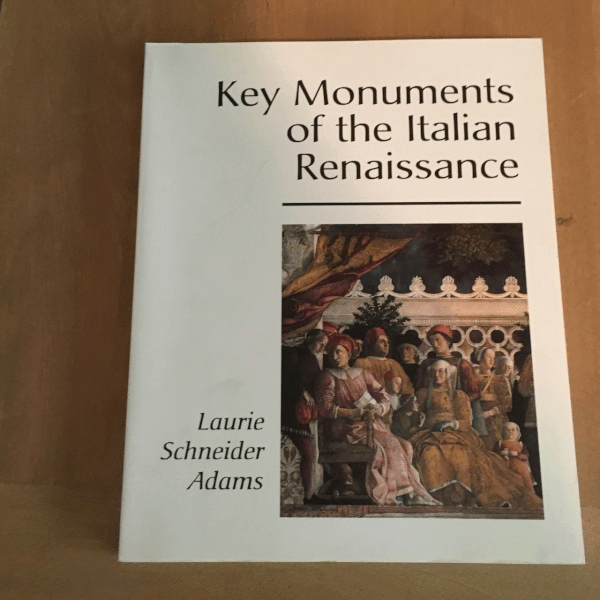Today, let’s talk about art books.
As The Art of Magic: The Gathering - Kaladesh just came out, this article will be both a review of that book, a coverage of Spectrum 23, and a smattering of other art books well worth your time. You can mindfully pick up anything official from Wizards of the Coast, like the newest Kaladesh art book, but what after that? Say you wanted to just go down one more layer of learning in a cost-effective way, related to the art you already enjoy. How do you go about that?
Personally, I think of three type of books to pick up on art.
1. Art Textbook
Just head to a used bookstore. In Minnesota, Half Price Books always has books I want to pick up on some tangentially related art movement. The issue is, the books are always so random and many are repeat visitors. Unsurprisingly, I never sold any of my art textbooks from college. Luckily, I had professors that used them extensively, as I wrote in the margins in pencil for future reference. I also only bought ones with those type of notes. They can be a bit stale though if you’re looking for an art textbook that’s actually correct, without bias. Helen Gardner’s Art Through The Ages is the best introductory book on art history out there. It’s accessible, been reprinted countless times, and has the rigor that a YouTube video can’t quit ever guarantee.
2. Church guides.
As second place guides on art in my opinion, look into churches. The amount of depth these self-published guides have is astonishing. Every time I head to Europe, I buy the 4-10 euro guide on the church. They’re “overpriced” compared to normal books, you’d think, though it’s near impossible to buy them online. Here’s a sampling of some I have below:
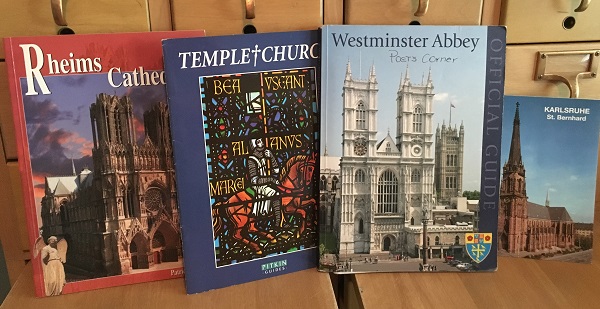
The best part of them? They explain symbol, allegory and meaning behind sculpture and painting within them. Check out the portal explanation on the Rheims Cathedral in France below on the left. It’s so clean and understandable.
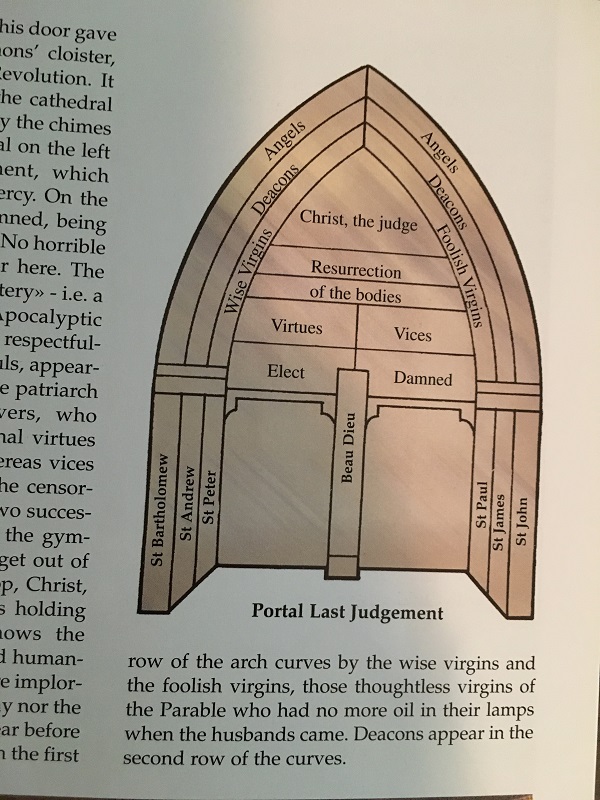
On that note, Laurie Schneider Adams has written tons of art books, of which, nearly all would be incredible pick-ups. Check out Key Monuments of the Italian Renaissance above in the gif. She has easily broken apart sections, with themes of thought in short, condensed areas so you can find it quickly in the appendix. Her call outs on key people or cultural happenings at the same time as art creation gives you perspective. She has infographics and call outs to major paintings, helping you understand not only the how, but also the why and where in easily digestible sections in approachable English. If you’re looking for a next, consider Key Monuments of the Italian Renaissance and Key Monuments of the Baroque, they’re just so easy to read and packed full of information on the hits.
3. James Gurney’s seminal books
Color and Light: A Guide for the Realist Painter
Imaginative Realism: How to Paint What Doesn't Exist
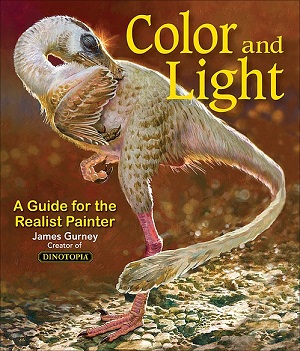 | 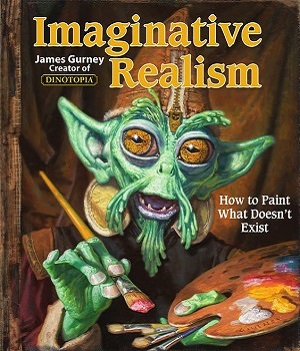 |
I know Gurney’s books are mentioned often whenever I write a holiday shopping list. I get that. No one likes repetitive content. I wish everyone reading would at least look into Gurney’s books the next time you’re in a bookstore in the art section.
They’re must purchases for any art student, art collector, or artist in the field.
They’re so seminal, when asking for recommendations, I have to say any books to read outside of Gurney’s, which results in nods or the obvious shrug. If Understanding Comics is your first foray into truly looking at comics and graphic novels, Gurney’s books will give Magic and any other fantasy art the depth you may be looking for but don’t quite see yet. After reading these, you won’t look at art the same again.
I am but one person though. Let’s ask the artists themselves what they find useful.
Magic Artists — Their Recommendations
I asked a few Magic artists who also happen to be art teachers, what they would recommend in terms of art books. Who better to ask than experts themselves?
- Lars Grant-West, an art critic (teacher) at Rhode Island School of Design (RISD)
- Scott Murphy , an Adjunct Instructor at the Hartford Art School
- Bastien Lecouffe-Deharme (@deharme)

Lars, Image by Sam Burley
 Lars, in his characteristic humility, didn’t want to recommend a book.
Lars, in his characteristic humility, didn’t want to recommend a book.
Why?
I think art is inspirational — but if you follow other people too much you end up being derivative. I think it's always better to go back to the source material and reinterpret - so while if I were asked to paint an animal, I might look lovingly at some Bob Kuhn or Ray Harris Ching painting and admire how they handled it, I'd want to look back at the real thing and come up with my own interpretation...so, while art is interesting to me, the thing that inspired it is more informative.
I did find one of my other inspiring old time fantasy favorites, Giovanni Piranesi - who did a series of etchings called "Carceri d'invenzione" (imaginary prisons) - which is a great example of fantasy imaginings from the 1700s. the whole set is available in a great book by Dover books (The Prisons / Le Carceri)
"The round tower" is one of my all time favorite pieces. If there were ever a piece of lineart by someone else I'd want to paint, it's that one. This one is one I love because it's really all about scale.

The Round Tower, from 'Carceri d'invenzione' (Imaginary Prisons) by Giovanni Battista Piranesi, ca. 1749–50, Etching, engraving, sulphur tint, burnishing. 21 7/16” x 16 5/16” (54.5 x 41.5 cm). At the The Metropolitan Museum of Art.
If you want to try before you buy, Lars also recommended searching the Met Museum’s collection and searching for Carceri d'invenzione. Wonderful reference is in there for future studies.
Lars also said:
Dover Books also has got a great book on animal anatomy that a lot of us dragon guys like to use, someone's put it online as a pdf but Dover sells it in an oversized version that makes great printed reference.
An Atlas of Animal Anatomy for Artists, which can be found online as a pdf though the book has enormous images which will be well worn for any artist or fan wishing to know more about how art is made.
Bastien‘s Recommendation:

The Art of Brom by Arnie Fenner
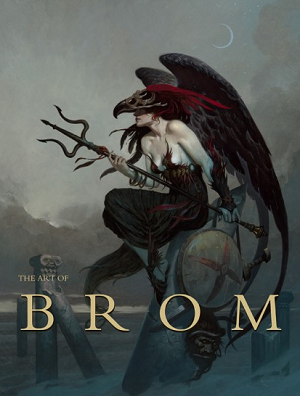 |  |
To me, Brom is an inspiration on many levels
It is creativity in progress. From his early Dark Sun work to his more current pieces.
I looked into what Bastien mentioned and the art book is more than just a book. It's a retrospective looking back at his past artworks to the present day. Normally artists don’t show the pieces they “grew” on. Here, Brom shows his early work to refinement, into today.
Since it is a full $40 on even Amazon, I would opt to pay the extra $10 and get the Publisher Edition direct from Flesk Publications. The sixteen extra pages are worth
Scott Murphy echoed Bastien and also mentioned The Art of Brom.

Scott Murphy, Image by IX Arts
Brom has always been one of my personal favorites, and he's been with table top gaming since way back. It's useful for me because I think he has a great sense of design through character, costume, story. Whenever I feel like I have no idea what I'm doing as an artist, or think I'm going in the wrong direction I open this book up and flip though. He clearly has fun painting what he wants to paint, and doesn't worry about what anyone has to say about it...and it gives him freedom to do anything.
This book is also great to see how he's progressed over the past 30 years. For any artist that you look up to, it's great to be able to draw parallels in your own career.
Scott then went on to more of his favorite books:

Shadowline: The Art of Iain McCaig by Iain McCaig
I think it's a great reference for character design, story design, and gives a wide variety of fantasy markets that you can be a part of. It's also got these cool little inserts that have some drawing and thinking exercises. Plus he manages to tell the whole book through funny third person story.
Iain, in case you didn’t know, created Darth Maul from scratch and is one of the guest experts on Sci Fi’s Face Off show. There are concept artists and there is Iain McCaig. His book is very expensive and very worth it.
Scott continued:
This one is always always always nearby when I'm painting. John William Waterhouse, published by Phaidon is the best book I've found of his work. He's the king of the Pre-Raphaelites and always transports me to another place with his paintings.
He had a way of bringing such realism to fairy tale or mythology that captivates me, and his paint usage is incredible. I think his works are what a lot of current fantasy artists are looking back to today.
Scott and I discussed the next at length, because it isn’t Norman Rockwell:
I picked this one up for super cheap maybe 15 years ago, and while is not a huge book, the images are great. NC is a must for any fan of illustration. He told stories unlike any other. I get so much compositional and narrative information from him but it's like you can only ever hope to come up with something half as good. This one is actually quite large by length and width, so nice big reproductions.
I asked, why not Rockwell? Wasn’t he consummate master on narrative illustration?
Well no, you can't top Rockwell, but he was too rooted in reality for my imagination. I always go for Wyeth if it's fantasy you're looking for.
That makes sense to me.
Thank you to the three artists for recommendations. My Amazon cart just became more full!
Magic’s 4th Art Book
The Art of Magic: The Gathering - Kaladesh
The main reason we are here today is to talk Magic, art and books. Let’s get into the newest in the series by James Wyatt.

Cover image of the Inventor’s Fair by Adam Paquette
This is the newest 240-page book that features dozens of full color works by more than 95 artists, the fourth installment of the Magic: The Gathering art books. This iteration has improved, just as each book you would assume in a series. I’ve grouped feedback on the book into a few categories, to help break it down: What’s Good, What’s Great, and Opportunities.
What’s Good
James Wyatt as author cannot be more perfect. He’s not only a phenomenal world builder for Magic, he has years of Dungeons and Dragons writing under his belt. He knows how to write about a world, a setting, making it approachable to understand. His one sentence art descriptions of the Inventors’ Fair items alone are incredible. For Mox Opal, “On loan from a private collection, this unique mechanism extracts power from a carefully prepared gemstone.” We get to see Wyatt explain both patronage of the fair in greater detail and we’re left to wonder, are the aetherborn donating items to the fair or are they merely new money, buying the ideas after? It’s so subtle, so simple, yet the writing has world building depth.
Of course, the obvious inclusions of world building, how the government works both on Kaladesh and what it's comprised of helps understanding. The section on the Prakhata Club is not to be overlooked. It’s a minor portion with a section on Yahenni, making it easy to overlook. There’s quality descriptions into how the club operates and why. The perfect weave of sidenote information into the storyline’s main feature in Kaladesh, the Inventors’ Fair and then into the Aether Revolt is seamless. I don’t see or observe a hiccup of the transition. Two-set blocks help this creation and the book follows the set instead of fighting it.
The art shown is from a variety of artists, including a bunch that are from artists who do not post their art online. Tons of in-house concept artists aren’t able to show that they’ve worked on Magic. The art book is one of the few ways we can see a larger image of it. The art book does this incredibly well, including the lesser seen art, like Creeping Mold by Cliff Childs or making you notice that Aaron Miller’s panorama of Fabrication Module, Animation Module and Decoction Module are one image. (Notice, it’s a circular image and even differs from the prints he sells of it, shown below.)

These books are very high quality and if you’re ever planning to make your own game, especially a trading card game (TCG) buy the Kaladesh version and set it as baseline of background one would need explained before a game should be made.
What’s Great
If bought early, upon release date, the hardcore Vorthos storyline lovers will see what the end of the storyline arc produces. It’s only a few weeks, but that early knowledge lets people scour the set for clues, able to post content on social media with brilliance before the rest of the community. That’s valuable.

One could argue it trumps the official story on the mothership website and its trickle of content, though if you’re that into it, you don't want to wait for multiple Wednesdays down the road to hear what you can find out now. They’ve become much better at this as with Innistrad. Emrakul and her emerging in Eldritch Moon was a foregone conclusion once the art book released prior to the preview card coming out.
https://twitter.com/Vronos/status/827195229983879168
A short section on concept art was added, giving some insight with attributions on where the filigree came from, who came up with what idea on the concept artist push and what was difficult in creating the world. It’s a very welcome addition. This is the information that’s hard to remember or get from an official document on the Wizards site. It’s a peek behind the curtain of world building and the first real example of it in the Magic art books.
There are twelve pages of behind the scenes concept work, shown from a very high level to show how the inspiration impacted the world-building. From Cynthia’s jewelry depictions to gain filigree to Steve Belledin’s snoot creatures that just needed larger eyes, we got to finally see what we wanted. We’ve been asking for it a while, as evidenced by the then creative director:
https://twitter.com/ColmDanger/status/684835262686302208
While the biggest opportunity is fans wanting concept art, there are a few other minor tweaks that would help.
Opportunities
In any book series, improvement is always possible. Clearly art books must balance an audience of future artists, current artists and simply fans of the art. Each group looks for very different things from process and creation from sketch to final, all the way to just accessibility because some artists don’t post larger images online at all. My personal belief is that it’s a marketing issue predominantly. It’s a world guide disguised as an art book. That said, I looked online at Amazon to find feedback, and filtered out the noise to see what others thought enough to post feedback online. Expectations are broad though these three stood out. Let’s touch on each.
I was hoping for more dedication to the art itself. The book is primarily about the world building and the backstory to Zendikar which is important to the game's story, while the art seems to take more of a backseat.
The art book is still a story guide, with art in it. That is ok, it just is promoted as an art book, not a world guide. It’s a fair assessment and VIZ Media could change a little marketing to fit expectations a little better. That’s not a major issue.
I would have rather have just a good art book depicting the best cards in this set rather than a story's book.
What is a good art book? What is good art in a Magic set?
The ability to determine what all people want is a test of futility. What is too much concept art? What is not enough? They are honing in for it, though I do believe if it was just pages of art, people would also dislike that because it’d have no context.
High quality printing. However, since it was called an art book, I would have expected more full page art and just more artwork in general. Most of the book is filled with descriptions of the regions of zendikar and the story is taken word for word from the website.
People buying the guides know about the main areas explaining in the online Magic story.
We want to know more about the concept artists.
We want to know more depth on the areas of Mirrodin, their Praetors and the steel thanes, with visuals on what they look like, not shown online. If it already exists, give us one more layer down. We know the Consulate cracked down in the cities, but what did that look like in the countryside? I would think federal agents cracking down on moonshine during prohibition would be the closest analogue. Instead, by not covering that, it made the set and story feel contained, small even.
We know that the creative team has more layers of world building, because we saw it on Daarken’s blog. That is what the concept part of the book should cover. It goes from highly curated public relations, explanation, then switches to a more personal look into the people who made things, allowing the book buyers to see behind the curtain.
We want to know exactly how a new creature type was created in the Aetherborn. We are given an explanation of what they are, how they are created but that is not why they are. To do that, the art book doesn’t explain either. Luckily, Daarken did tell us the info we all wanted in the art book:
Sometimes inspiration can come from the last place you would expect. The hotel is located across the street from WotC, so I walk to and from work every day. You have to walk through some trees in order to get there, so on my way to work, I noticed that the trees were perfect for the Sootfolk.

Tree reference from Daarken
The trees reminded me of a burnt cigarette and they just so happened to be white with a black interior, which was what I had already done for my second concept. I wanted to use some of these elements to create my new version of the Sootfolk.
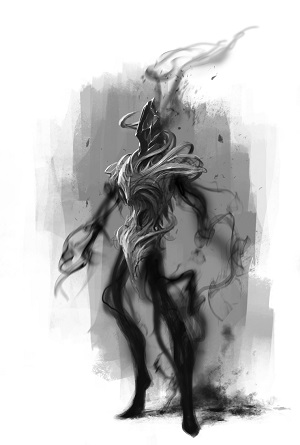 |  |
Can you see the progression now? It didn’t come from thin aether, as it were. They have a foundation somewhere!

Images via Daarken, Copyright Wizards of the Coast
The “Kaladesh Art Book,” as players call it, is worth buying if you want to learn anything about Kaladesh on a deeper level. If you find a deal, or a discount coupon at Barnes & Noble, add it to your list, its quality is high and the art is great!
Spectrum 23
I couldn’t talk about art books without mentioning Spectrum.
I cover Spectrum every year. It’s the annual book that consists of submitted fantasy and sci-fi art, separated into categories, with a gold and silver winner in each. The Art term is called Imaginative Realism for this genre of art, though the fine art community considers this all illustration and often a lesser art. Having a book of the best helps to transcend some artists and artworks into that gallery world of fine art.
To make it into Spectrum is a signifier of an artist “making it” in the community, as the panel of judges who select inclusion into the book are generally artists or people associated with art. For Magic, getting your first card commission is the first of two steps, with the second being admitted into this book. Wizards itself submits a few dozen images for inclusion, paying the cost so artists don’t have to incur it. This art is considered institutional in the book.
The best art, arguably, in the book is in the unpublished section. That is where the titans compete against each other. When Donato Giancola has a private commission, he submits it there. If there is a pinnacle, it’s that section where artists breathe their full creativity without bounds into art.
This year, Spectrum 23, is the first year a Magic illustration won the institutional category. This is a massive accolade for the brand and for Tyler Jacobson, who won with Exalted Angel, shown below.

Exalted Angel by Tyler Jacobson, Digital
This piece is phenomenal. It’s one of Magic’s best artworks ever made. Were this to be a traditional painting, it would be incredibly expensive. It would be brought to Illuxcon and sold in the first hour, type of expensive.
What makes it so good you may ask?
The lighting and drapery references are superb.
Light:

Image from James Gurney’s Gurney Journey blog
Showing light is what makes reference so important. It moves a good painting to a great painting, showing realism and the underlying years of study an artist learns into visual skill. When you take reference photography of yourself, which Ryan Pancoast explains and shows on his gumroad, in case you’re curious, you will see exactly what a painting is missing when you add a spotlight and the time of day you choose for reference.
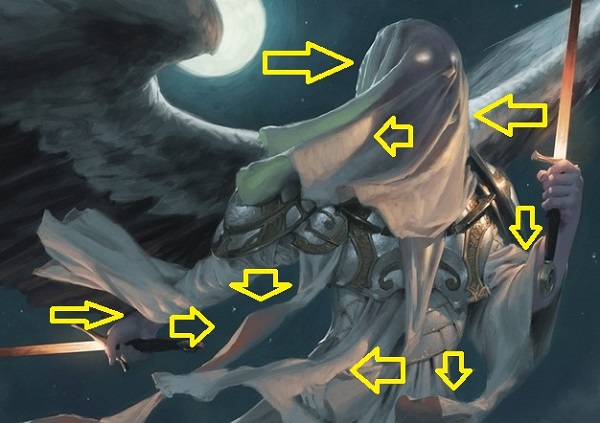
Tyler’s cloth covered face of this angel not only has glowing eyes, a lit sword, and reflected moonlight. The greens, oranges and purples do not make sense in a vacuum, but add light reference and they all flow together beautifully.
Drapery:

Image by CGcookie via DeviantArt
 On a technical execution level, Tyler’s drapery usage here is incredible. I like digging around on DeviantArt and ArtStation every Sunday, just to find Magic fan art and good tutorials, like the one above. The wrinkles on this angel switch from hard to soft to stiff in such rapid succession. The tension changes on the same type of cloth, integrating with light simultaneously is incredibly difficult. Painting the angel in daylight would mitigate much of the difficulty, but it wouldn’t give the emotion, and dread of an angel coming to smite disbelievers.
On a technical execution level, Tyler’s drapery usage here is incredible. I like digging around on DeviantArt and ArtStation every Sunday, just to find Magic fan art and good tutorials, like the one above. The wrinkles on this angel switch from hard to soft to stiff in such rapid succession. The tension changes on the same type of cloth, integrating with light simultaneously is incredibly difficult. Painting the angel in daylight would mitigate much of the difficulty, but it wouldn’t give the emotion, and dread of an angel coming to smite disbelievers.
And this is digital. It can be as technical and as skill intensive as you’d like. You just need a good open-ended commission and an artist working at the highest level, that’s all.
It’s a huge accomplishment to Tyler and a massive deal for Magic’s brand amongst peers. Congrats!
Below are the other inclusions into Spectrum, including Wes Burt’s Natural Connection, which was up for the Gold award as well. The art just keeps getting better and recognized by peers more often. Recognition helps attract more talent, higher talent, and keeps the pipeline strong of Magic artists.

Natural Connection by Wesley Burt, Digital

Sword of the Animist by Daniel Ljunggren, Digital

Oblivion Strike by Daniel Ljunggren, Digital

Managorger Hydra by Lucas Graciano, 16x20”, oil on masonite

Nyxborn Wolf by Lucas Graciano, 12x14”, oil on masonite

Tyrant of Valakut by Steven Belledin, 24x18”, oil on gessoed hardboard
Steve wrote about this dragon on his blog.

Faerie Miscreant by Steven Belledin, 14x11”, oil on hardboard
Steve wrote about this faerie on his blog.

Brutal Hordechief by Tyler Jacobson, Digital

Outnumber by Tyler Jacobson, Digital

Karlov of the Ghost Council by Volkan Baga, 17x13”, oil on panel

Diregraf Colossus by Vincent Proce, Pencil and digital
I mentioned this stellar piece in my Shadows Over Innistrad art review.

Nissa's Pilgrimage by Matt Stewart, 18x24”,oil on panel

Tajuru Pathwarden by Victor Adame Minguez, Digital

Baloth Pup by Steve Prescott, 12x16”, acrylic
This pup was called out in my Oath of the Gatewatch art review.

Harmless Offering by Howard Lyon, Digital

Sinuous Vermin by Jason Kang, Digital

Adverse Conditions by Jason Rainville, Digital

Kiora, Master of the Depths by Jason Chan, Digtal

Ruin Processor by Slawomir Maniak, Digital

Angel of Renewal by Todd Lockwood, Digital

Murasa Ranger by Eric Deschamps, Digital

Resolute Blademaster by Joseph Meehan, Digital

Dark Salvation by Cynthia Sheppard, Digital

Queen Marchesa by Kieran Yanner, Digital

Welcome to the Fold by David Palumbo, 12x16’, oil on board

Sentinel of the Eternal Watch by Bastien Lecouffe Deharme, Digital
Marketing Art

Gideon and Nissa Battle for Zendikar by Tyler Jacobson, Digital

The Art of Magic: The Gathering-Zendikar by Adam Paquette, Digital

Liliana Turns the Tide by Aleksi Briclot, Digital
My eyeballs now hurt from not blinking.
I’m off to nap.
—Mike
















